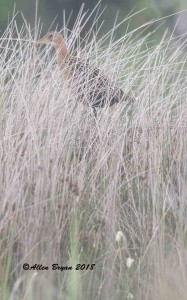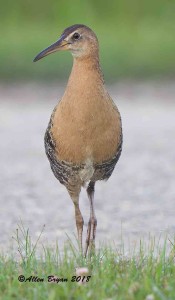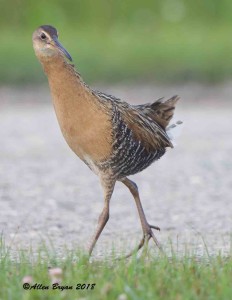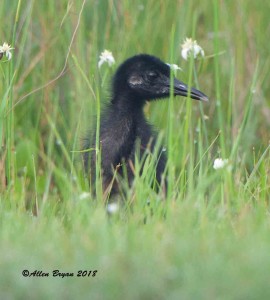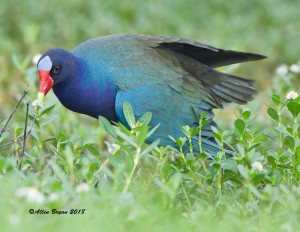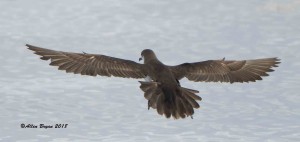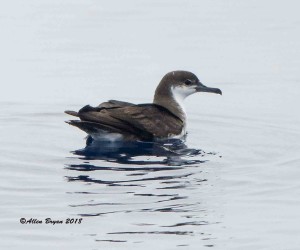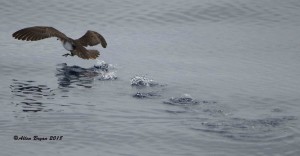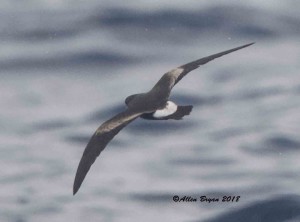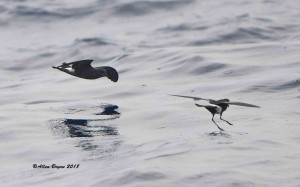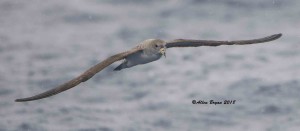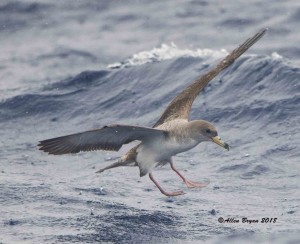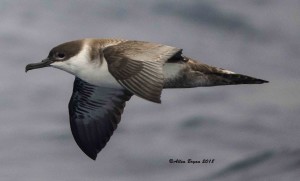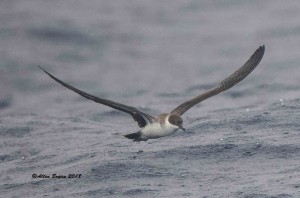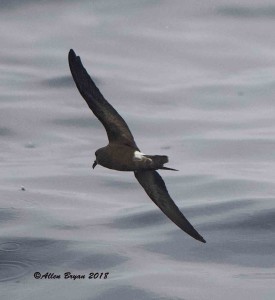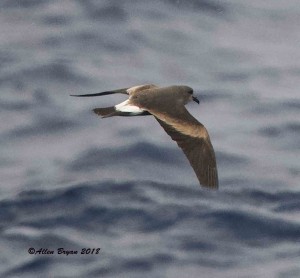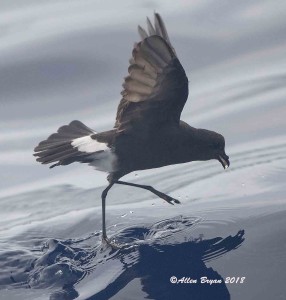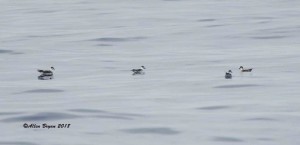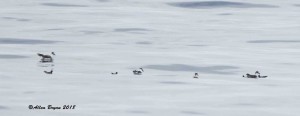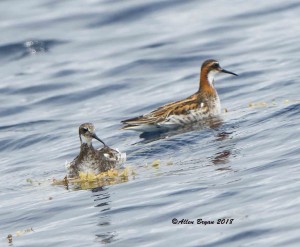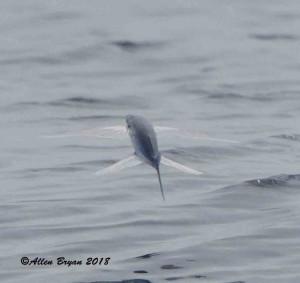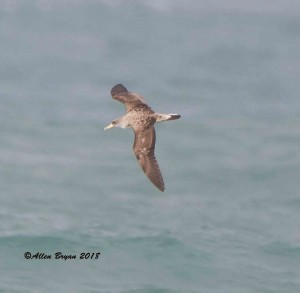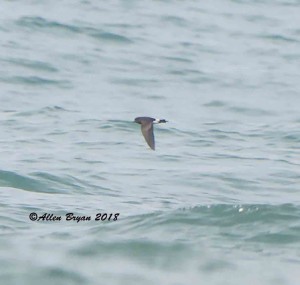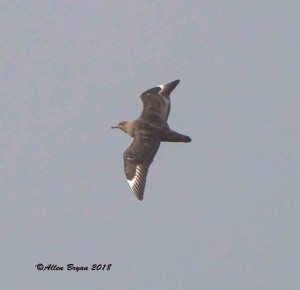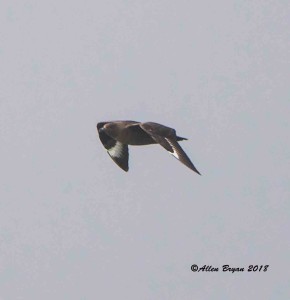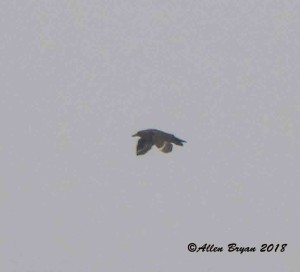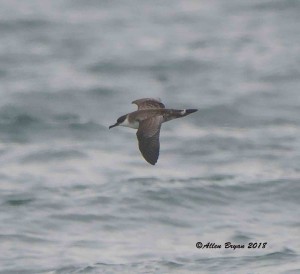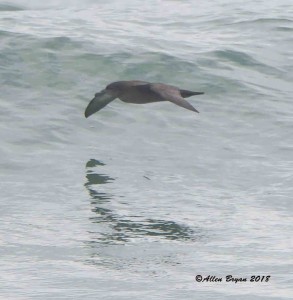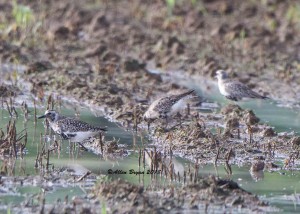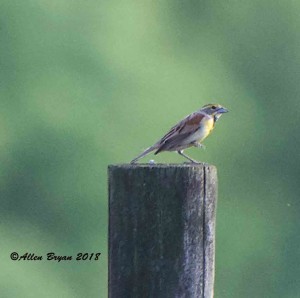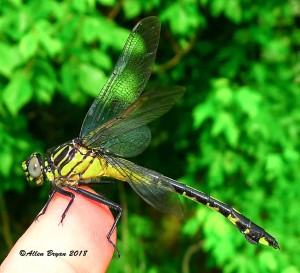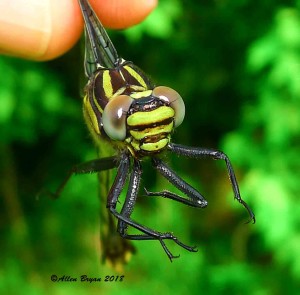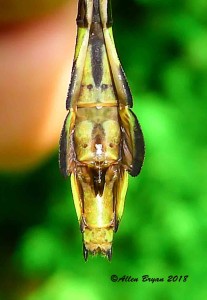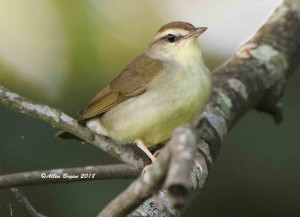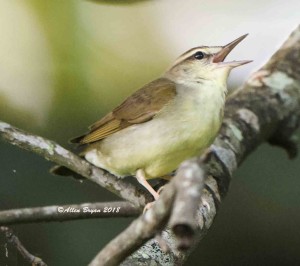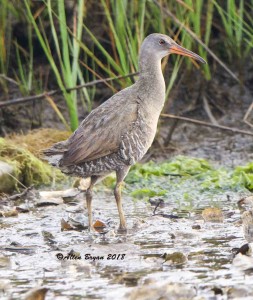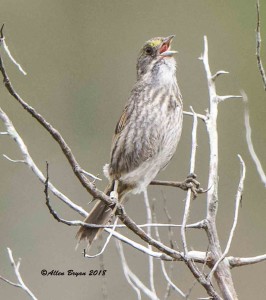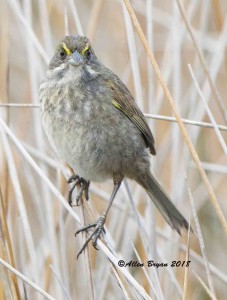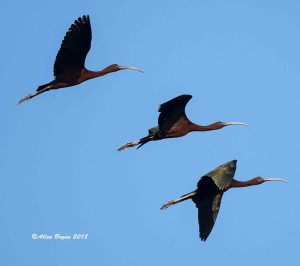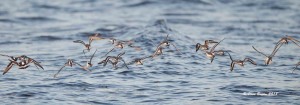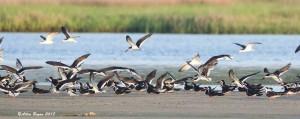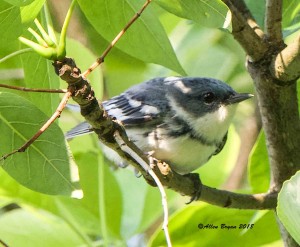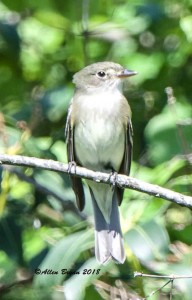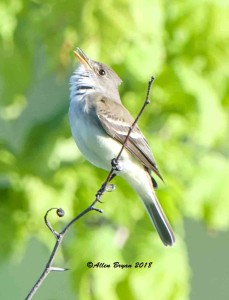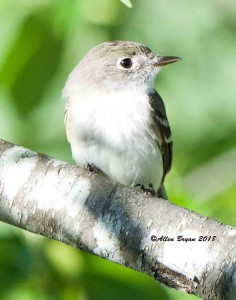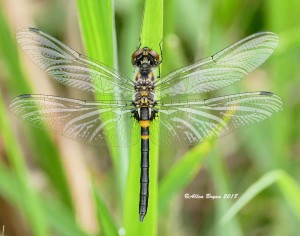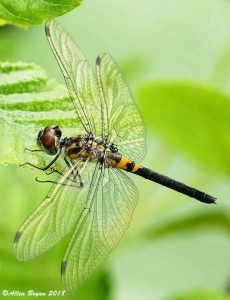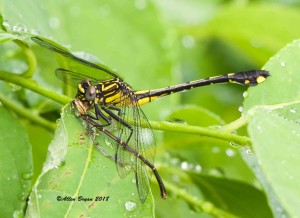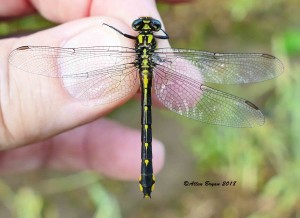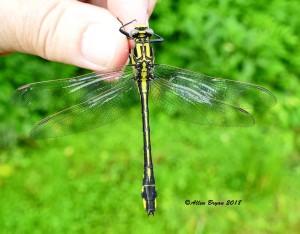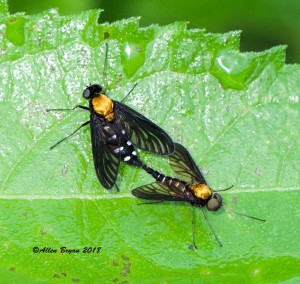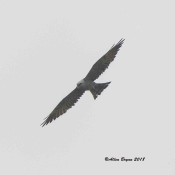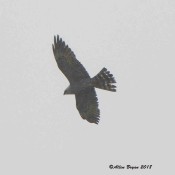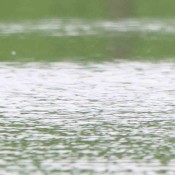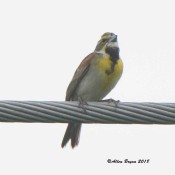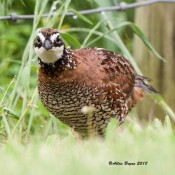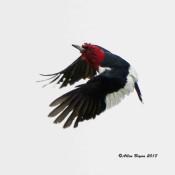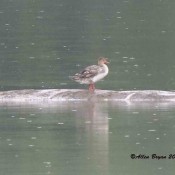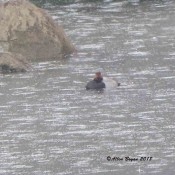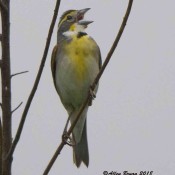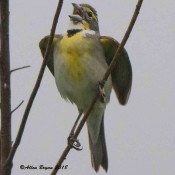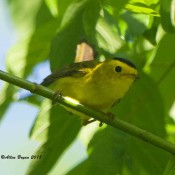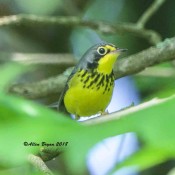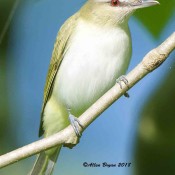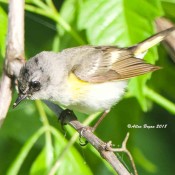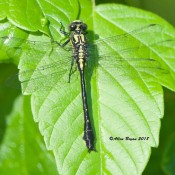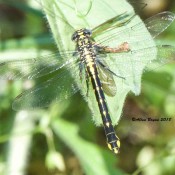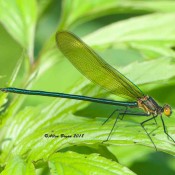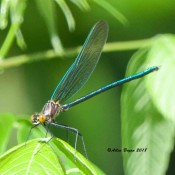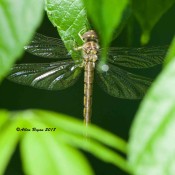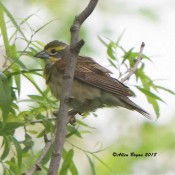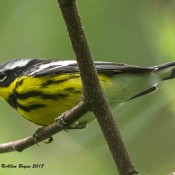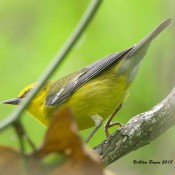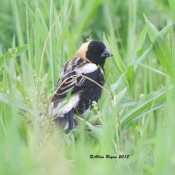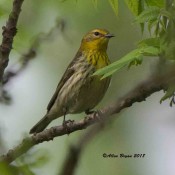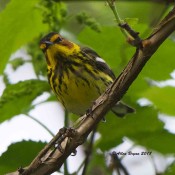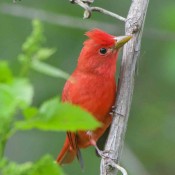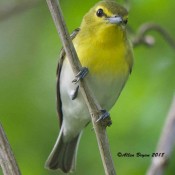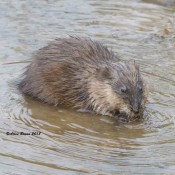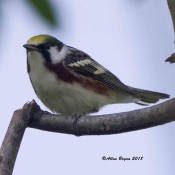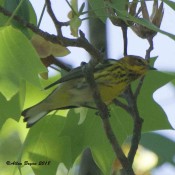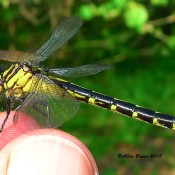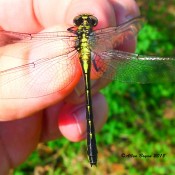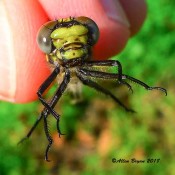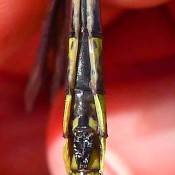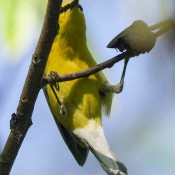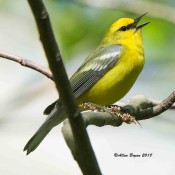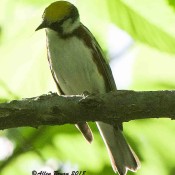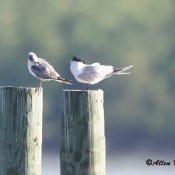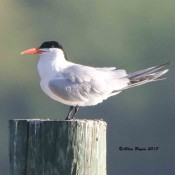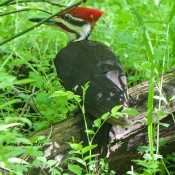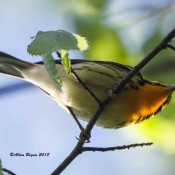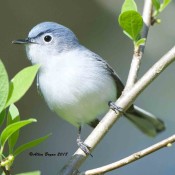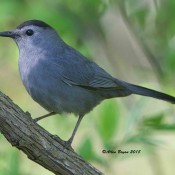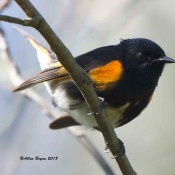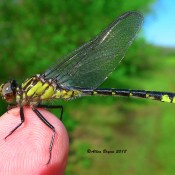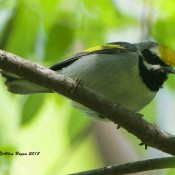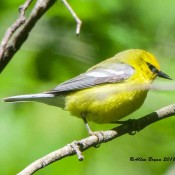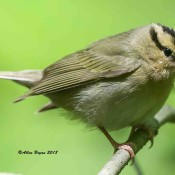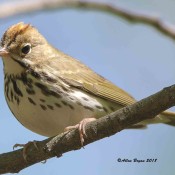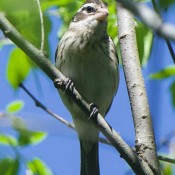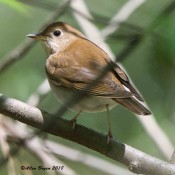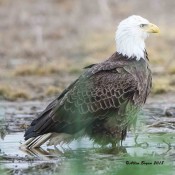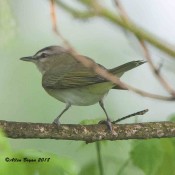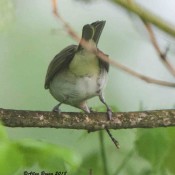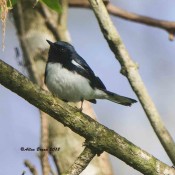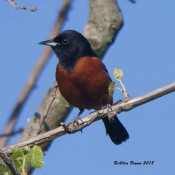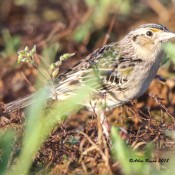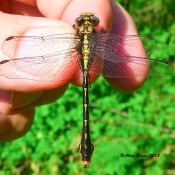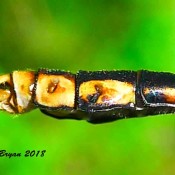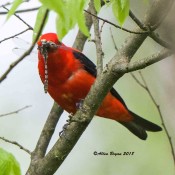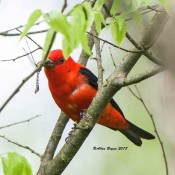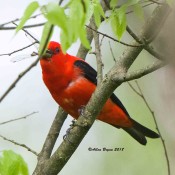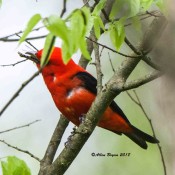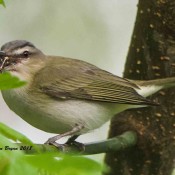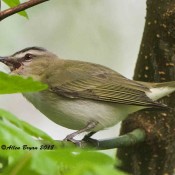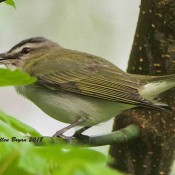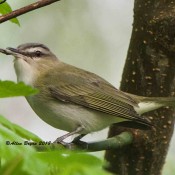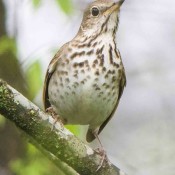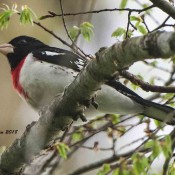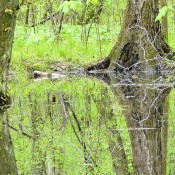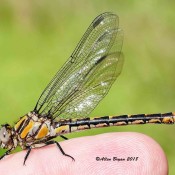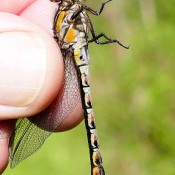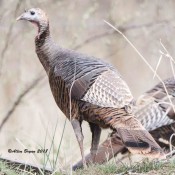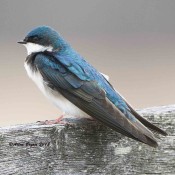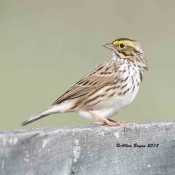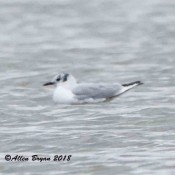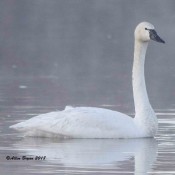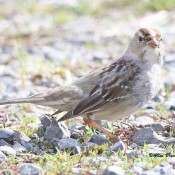May 31, 2018
This morning while circling through the campground at Hatteras Point I encountered several rails and their families. The first surprising thing to me was encountering a vocalizing individual “perched” up high in the marsh. I had never realized that they would broadcast their territory in this manner.
There were at least two family groups in the campground feeding along the edge of the marsh and the campground itself.
The next question is are these King Rails or Kling Rails? The appearance is in alignment with King Rail and at both the salt marsh pond and behind the motel in Hatteras I observed Clapper Rails which did not have this rufous coloration and they had gray cheeks. It is challenging to understand that the dune line (separating salt and fresh water) could be the differentiation between the two species?
I next traveled up to Bodie Island and easily observed the Purple Gallinule feeding in the open oblivious to all that was going on. I noted it does appear to have a damaged wing, probably hit a telephone line when migrating, and thus could be there for the duration of its life.
May 30, 2018
I joined many other birders and we went off shore from Hatteras, N.C. with Brian Patteson, Kate Sutherland, Ed Corey and Peter Flood aboard the Stormy Petrel II. Please visit Brian’s blog at:
http://seabirding.blogspot.com
for a summary of the birds observed and the conditions that we had to deal with during the day.
The following are a few photographs from the day’s effort:
May 29, 2018
I awoke this morning earlier than expected this morning due to indigestion from the day before. (Must have eaten to much for Memorial Day?) It proved to be a “good” reason to go ahead and get up and head toward Cape Point at Buxton at 1:50 a.m.
I arrived at Cape Point about 7:00 a.m. and since I don’t have four wheel drive, I started my walk toward the point from the ramp 44 parking area. I had some confusion as to how to circumnavigate the breeding bird enclosure near the point but with some insight provided by the “locals” I walked the ocean edge the last several hundred yards to my vantage point. The conditions were winds from the south with some movement during the morning to SSW. The skies were mostly overcast with some storminess off shore and some haze.
The first “pelagic” birds observed at ~8:15 a.m. were some intermittent Cory’s Shearwaters followed by the occasional Wilson’s Storm-petrel.
At 8:40 a.m. a large bull of a bird started approaching my vantage point with a very distinctive and prominent white flash demonstrating above and below the wing. As it continued its approach it became clear that the conditions had promoted a South Polar Skua toward the Point.
A steady movement of Cory’s Shearwaters continued with an occasional Wilson’ Storm-petrel and then again at 9:07 a.m. another South Polar Skua flew into sight but much further off shore.
Birds continued their steady movement until about 9:45 a.m. when numbers started to dwindle. But two additional species of shearwater flew by during the “primary” window of viewing which were Great Shearwater and Sooty Shearwater.
All in all until about 11:35 a.m. I observed the following totals off the point:
Cory’s Shearwater 101
Great Shearwater 1
Sooty Shearwater 3
South Polar Skua 2
Wilson’ Storm-petrel 12
Common Loon 1
Northern Gannet 2 (immature)
Common Tern 4
Sandwich Tern 2
Brown Pelican 15
May 28, 2018
The night of May 27th hosted a couple of strong thunderstorms in the area and I headed out in the morning to see if any birds of note had been grounded while migrating. I visited some private fields in Powhatan County and came across three Black-bellied Plovers feeding. They ended up being the only species of note probably associated with the weather. I then went to Goochland County and briefly confirmed the Dickcissel found by Andrew Rapp is still on territory.
I next visited Tucker Park in Goochland County to see if any odonates of note were demonstrating themselves. I observed my FOY Black-shouldered Spinylegs and also my first Blackwater Clubtail. Both of these species appear to be on their “normal” timelines for emergence.
May 20-26, 2018
In between trips to North Carolina, I visited several counties during the last week. The counties included Highland, Mathews, Fluvanna and Caroline. Odonates are running about 2+ weeks behind their normal emergence per my historic records at almost all sites. Tenerals of various species were observed in each county where adults of the species should be the theme.
Birds are on their territories and hopefully both taking care of their nestlings or currently starting incubation. Some bird highlights for me were Mourning Warbler, 1 each, in both Highland County and Pocahontas County, WV. The bird at Paddy Knob was strictly on the WV side when I visited. The grading of the road by a construction crew made both hearing and observation challenging. In Southampton County I had two different Swainson’s Warblers and finally got a “photographic” lifer. Mathews County hosted various shorebirds that were passing through and I got to enjoy “loads” of Seaside Sparrows and Clapper Rails on territory.
May 19, 2018
The rain has continued and local breeding birds in low lying areas are definitely taking a hit. I observed many local bridges under water today and at many I am familiar with there is impact on swallows, grackles and phoebes.
Most of my activity was focused on areas east of Richmond with Charles City County, Kent County and King William County. I had hoped for shorebirds in flooded fields but came up empty for the attempt. I did however observe two Ring-neck Ducks in Charles City, a Mississippi Kite in New Kent and a four Dickcissels at two sites in Charles City.
Later in the day, I visited Powhatan and Goochland Counties briefly and observed the previously reported Dickcissel by Andrew Rapp.
- Mississippi Kite- 1st summer bird in New Kent County, Virginia
- Mississippi Kite- 1st summer bird in New Kent County, Virginia
- Ring-necked Ducks in Charles City County, Va.
- Dickcissel in Charles City County on Sandy Point Road
- Northern Bobwhite in Powhatan County, Va.
- Red-headed Woodpecker in Goochland County, Va.
May 18, 2018
Feast or famine? Rain will not stop falling! While some rain can be most beneficial this rain event is coming in a volume that is probably proving detrimental to many bird species as well as other wildlife. Many ground nesting birds and many who nest in low foliage have lost their current broods due to the flood plain areas of many streams and rivers now being flooded out. Species such as Louisiana Waterthrush, Ovenbird, Prothonotary Warbler, Kentucky Warbler and Wood Thrush to name a few may choose to disperse early due to this nesting collapse. Many low bridges are flooded and additional bird species such as Eastern Phoebe and several swallow species may have been negatively impacted. Field species such as Killdeer, Horned Lark are yet additional avian species that may have been negatively impacted by this event.
As for today, I stopped briefly by Kerr Lake Dam in Mecklenburg County and observed a tardy male Redhead, a female Common Merganser and one Pied-billed Grebe. The rain did not abate enough for additional viewing.
- Common Merganser at Kerr Lake dam area, Va.
- Redhead at Kerr Lake dam Area, Va.
May 17, 2018
Dickcissels were the bird of the day in Charles City County, Virginia. I observed and heard 6 different male birds on territory in two locations. One location is private but two are along Sandy Point Road between Tettington Lane and the grain silos on the right hand side heading in. Both of these birds were actively singing from the power lines.
- Dickcissel- male singing in Charles City County, Va. (note the tick below the bill)
- Dickcissel- male singing in Charles City County, Va. (note the tick below the bill)
May 11, 2018
What an enjoyable day! Temperatures were mild this morning and skies were clear. I ventured out to western Goochland County and Fluvanna County. Birding appeared slow at first with few migrants of note until I reached Fluvanna County. One to two singing Wilson’s Warblers and two Canada Warblers were making their presence known. A Chestnut-sided Warbler later appeared. Finally, Yellow-billed Cuckoos were noted. It has been an unusual Spring in that I have had Black-billed Cuckoos in Fluvanna and Frederick Counties but No Yellow-billed. One last first for the day, I noted a first summer American Redstart male which was singing and in transitional plumage.
- Wilson’s Warbler in Fluvanna County, Va.
- Canada Warbler in Fluvanna County, Va.
- Red-eyed Vireo in Goochland County, Va.
- American Restart- 1st summer male
No trip could be complete this time of year without some odonates and they were finally presenting themselves. With the cold start to the Spring many (if not all clubtails/snaketails) are late emerging from the James River. Today I had a good showing of Cobra Clubtails, Green-faced Clubtails, Spine-crowned Clubtails, Appalachian Jewelwings and a solo Cinnamon Shadowdragon. Cobra Clubtails should be joined shortly by Splendid Clubtails and eventually Blackwater Clubtails during the next several weeks.
- Green-faced Clubtail, male, along the James River, Va.
- Spine-crowned Clubtail, female, along the James River, Va.
- Appalachian Jewelwing, male, along the James River, Va.
- Appalachian Jewelwing, male, along the James River, Va.
- Cinnamon Shadowdragon, female, along the James River, Va.
May 6, 2018
The day was dark and foreboding this morning but sometimes these prove to be the most interesting days. I traveled to Prince George County early to start out at near Jordan Point. Migrating warblers included substantial numbers of Yellow-rumped Warblers which had Yellow, Common Yellowthroat, Blackpoll and a single Black-throated Blue. A breeding plumaged Common Loon was noted in the direction of Hopewell.
My travels then took me over the bridge to Charles City County. Here I stumbled upon a singing Dickcissel and an apparent mate on some private property. Nearby a breeding plumaged Cattle Egret was noted also. A large flock of Bobolinks numbering at least 225 birds was also observed in the county.
At the Wetlands section of the James River Park System, I noted several migrants which included several Black-throated Blues, Magnolia, Blackpoll, Northern Waterthrush and a Blue-winged Warbler.
- Dickcissel in Charles City County, Va.
- Magnolia Warbler at the Wetlands in Richmond City, Va.
- Blue-winged Warbler at the Wetlands in Richmond City, Va.
- Bobolink in Charles City County, Va.
May 5, 2018
I decided at the last moment to pursue a half “Big Day”, finish by noon, for Goochland County as I awoke earlier than expected. I left the house at 4:15 a.m. and went to southern Goochland County for potential owls and nightjars. At 4:53 a.m., I initiated my first stop and through 6 a.m. I tallied 31 species, highlighted by Barn Owl (2), Barred Owl and Whip-poor-wills. Each successive hour after 6 a.m. I struggled to add additional bird species with 29, 15, 11, 4, 4 and 5 being added to arrive at a total of 99 by ~11:30 a.m. when I “packed it in”. Other observations included a pair of Hooded Mergansers on the James River near Cartersville which will hopefully prove to be breeders. Migrant land bird diversity was sparse as only Cape May Warbler (5), Black-throated Blue (4), Yellow-rumped Warbler, Veery, Swainson’s Thrush and one Empidonax sp. (non-Acadian) were noted. Mammals noted were a dying raccoon surrounded by Turkey and Black Vultures in the middle of a rural field and a muskrat along the James River.
- Cape May Warbler- female in Goochland County, Va.
- Cape May Warbler- male in Goochland County, Va.
- Summer Tanager in Goochland County, Va.
- Yellow-throated Vireo in Goochland County, Va.
- Muskrat feeding along the James River, Va.
May 3, 2018
This morning I visited both Goochland and Fluvanna Counties. The temperatures have really risen since late last month and the low for this morning was a brief 59 which climbed substantially with each new hour.
Migration appeared to be slow but a few new birds were noted including one (1) Black-billed Cuckoo calling repetitively in Fluvanna County and also a Cape May Warbler. Chesnut-sided Warblers were also noted in both counties this morning. A silent Empidonax sp. Flycatcher was noted in Goochland County, none Acadian.
I pursued odonates, which continue with slim pickings, at several sites along the trip. The highlight of the morning was two Green-faced Clubtails (possibly a third was missed). Stream Cruisers, Ashy Clubtails, Common Whitetail.
- Chestnut-sided Warbler in Fluvanna County, Va.
- Cape May Warbler in Fluvanna County, Va.
- Green-faced Clubtail female in Fluvanna County, Va.
- Green-faced Clubtail female in Fluvanna County, Va.
- Green-faced Clubtail female; note the shape of the spines on the vertex
- Green-faced Clubtail female sub-genital plate
May 2, 2018
I got up early this morning and went to James River N.W. R. in Prince George County to pursue Chuck-wills-widow. I had 14+ for the effort plus one Great Horned Owl and a chorus of early morning warblers and others before sunrise.
I then traveled to eastern Henrico to pursue King Rail in the “usual” spot. This was my third recent effort and was met again with no success. I attempted to “walk out” in the area for enhanced coverage but it was to no avail. My first of season (FOS) Eastern Wood-Pewee was noted.
I then went to the “Wetlands” part of the James River City Park System. The most interesting migrants were Chestnut-Sided Warbler, Black-throated Blue Warbler, Blue-winged Warbler (my 7th for the Spring), Cerulean Warbler and Veery.
- Blue-winged Warbler at the “Wetlands” eating caterpillar in James River Park, Va.
- Blue-winged Warbler at the “Wetlands” singing in James River Park, Va.
- Chestnut-Sided Warbler at the “Wetlands” in James River Park, Va.
May 1, 2018
Today I visited Charles City County, Jordan Point and the “Wetlands” in the City of Richmond. I observed a maxima of 23 Royal Terns on the James River on the Charles City County side and during the early morning 15 came over to perch on pilings at the Jordan Point Marina. Migration of Yellow-rumped Warblers continued “heavy” but no major movement of other species were noted.
At the “Wetlands” I heard/observed 2 Blue-winged, Cerulean, Blackpoll, Black-throated Blue, Northern Waterthrush and Palm Warblers as migrants. Several Veeries, Swainson’s and Hermit Thrushes were also noted on the move.
- Bonaparte’s Gull and Royal Tern at Jordan Point Marina, Va.
- Royal Tern at Jordan Point Marina, Va.
- Pileated Woodpecker at the “Wetlands”
April 30, 2018
Migration appeared sluggish this morning with no major movement of birds noted except for Yellow-rumped Warblers. I did observed first of season Blackburnian Warbler and Acadian Flycatcher.
I spent a little time pursuing odes and some butterflies in Fluvanna County. While total number of species observed in each group was low, they did provide for some needed walking and R & R.
Odonates observed: St. Croix Snaketail- 4; Spine-crowned Clubtail- 2; Ashy Clubtail- 7; Ashy/Lancet Clubtail- 1; Springtime Darner-1; Uhler’s Sundragon- 1; Sely’s Sundragon-1; Common Baskettail- 5
Butterflies observed: Tiger Swallowtail- 1; Red-spotted Purple- 1; Pine Elfin- 1; Brown Elfin-1; Mourning Cloak-1; Juvenal’s Duskywing- 14; Eastern Comma- 1; Pearl Crescent- 1
Some photographs from the day:
- Blackburnian Warbler in Goochland County, Va.
- Blue-gray Gnatcatcher in Fluvanna County, Va.
- Gray Catbird in Fluvanna County, Va.
- American Redstart in Fluvanna County, Va.
- Spine-crowned Clubtail (teneral) in Fluvanna County, Va.
April 29, 2018
Birds on the move! Today the bird of the day was Yellow-rumped Warbler. I was in the Jordan Point area early this morning and I conservatively estimated at least 425 Yellow-rumped Warblers moving through. In the mix were Blackpoll Warblers, Blue-winged Warbler, Northern Waterthrush, American Redstart, Palm Warbler and others.
In Charles City County, another Blue-winged Warbler was noted. An adult Bald Eagle also posed conveniently next to the road. Two Caspian Terns were noted flying over the river at this location.
In eastern Henrico County, a small assortment of shorebirds included Greater & Lesser Yellowlegs, Solitary Sandpiper, Semipalmated Plover and Least Sandpipers.
I then traveled to the “Wetlands” in the James River Park System. The birds at this location were very obliging for photographs and the mixture of warblers and thrush made the end of the morning very rewarding.
- Golden-winged Warbler at the “Wetlands” in James River Park, Va.
- Blue-winged Warbler at the “Wetlands” in James River Park, Va.
- Worm-eating Warbler at the “Wetlands” in James River Park, Va.
- Ovenbird at the “Wetlands” in James River Park, Va.
- Rose-breasted Grosbeak at the “Wetlands” in James River Park, Va.
- Veery at the “Wetlands” in James River Park, Va.
- Bald Eagle in Charles City County, Va.
For the morning, I ended up with 91 total species and 18 species of warbler including 3 Blue-winged Warblers in three counties.
April 28, 2018
Having enjoyed the previous morning at Powhatan State Park, I decided to see what differences a day could make. The morning was crisp at 47 degrees and fog hanging immediately adjacent to the river but the “uplands” were fog free and bird life was making itself known. Breeding species were again obvious continuing to establish the territories for themselves and their mates. Migratory birds were also demonstrating themselves with Blue-winged Warbler, Black-throated Blue Warbler, Black-throated Green Warbler, Northern Waterthrush, Rose-breasted Grosbeak and Bobolink being heard and/or seen.
I again today was fortunate(?) to observe and photograph a Red-eyed Vireo catching and consuming an Ophiogomphus susbehcha (St. Croix Snaketail) in the woods adjacent to the James River. With three being caught and consumed now in the last two days it makes one wonder how many dragonflies are “harvested” on a daily, if not, seasonal basis.
For the day, I observed 63 bird species at the park. I also enjoyed continuing good numbers of Ophiogomphus susbehcah (St. Croix Snaketail)- 27; Springtime Darner- 1; Common Baskettail-5.
- Red-eyed Vireo consuming Ophiogomphus susbehcha (St. Croix Snaketail) at Powhatan State Park, Va.
- Red-eyed Vireo consuming Ophiogomphus susbehcha (St. Croix Snaketail) at Powhatan State Park, Va.
- Black-throated Blue Warbler at Powhatan State Park, Va.
- Orchard Oriole at Powhatan State Park, Va.
- Grasshopper Sparrow at Powhatan State Park, Va.
- Ophiogomphus susbehcha (St. Croix Snaketail) in Fluvanna County, Va.
- Ophiogomphus susbehcha cerci- Goochland County, Va.
April 27, 2018
We experienced a series of rain storms overnight, some with thunder, and I hoped for some possible grounding of birds in the area. I decided to visit Powhatan State Park and got there around 7 a.m. Bird activity was much as expected with breeding species occupying their unique niches within the woods and fields of the park. The only migrating/lingering sparrows were White-throated and Savannah. Migrating warblers included a Cerulean, Black-throated Green, Yellow-rumped and several Northern Waterthrush. A single Swainson’s Thrush and 2 Rose-breasted Grosbeaks were also noted. The bird of the day was Scarlet Tanager as at least 11 different males were noted in song and in groups of 2/3.
My most memorable experiences of the day were observing both a Red-eyed Vireo and a Scarlet Tanager catch and eat two different species of dragonfly. The Red-eyed Vireo caught an apparent Ashy Clubtail (Gomphus lividus) and the Scarlet Tanager caught a St. Croix Snaketail (Ophiogomphus susbehcha).
- Scarlet Tanager eating St. Croix Snaketail (Ophiogomphus susbehcha) at Powhatan State Park, Va.
- Scarlet Tanager eating St. Croix Snaketail (Ophiogomphus susbehcha) at Powhatan State Park, Va.
- Scarlet Tanager eating St. Croix Snaketail (Ophiogomphus susbehcha) at Powhatan State Park, Va.
- Scarlet Tanager eating St. Croix Snaketail (Ophiogomphus susbehcha) at Powhatan State Park, Va.
- Red-eyed Vireo eating apparent Ashy Clubtail (Gomphus lividus) at Powhatan State Park, Va.
- Red-eyed Vireo eating apparent Ashy Clubtail (Gomphus lividus) at Powhatan State Park, Va.
- Red-eyed Vireo eating apparent Ashy Clubtail (Gomphus lividus) at Powhatan State Park, Va.
- Red-eyed Vireo eating apparent Ashy Clubtail (Gomphus lividus) at Powhatan State Park, Va.
- Swainson’s Thrush at Powhatan State Park, Va.
- Rose-breasted Grosbeak at Powhatan State Park, Va.
For the morning I observed 64 birds species within the park.
- Mirrored Symmetry at Powhatan State Park, Va.
Weekend of April 22/23
I was able to get out for a short while on both days. My efforts were focused on observing some odonates since northern Virginia has presented slim pickings year to date; only have observed two (2) Common Green Darners in Winchester. I visited Sussex County on Saturday and encountered a few species in the cool temperatures:
Common Baskettail 3
Blue Corporal 14
Ashy Clubtail 2
Lancet Clubtail 1
In Powhatan County on Sunday, I was surprised but pleased to see that Ophiogomphus Susbehcha (St. Croix Snaketail) was still present in reasonable numbers with a couple appearing to be recently emerged tenerals. This Spring’s cool temperatures appear to have slowed their emergence by several weeks(?).
St. Croix Snaketail 37
Stream Cruiser 1
Springtime Darner 2
Common Baskettail 12
Slender Baskettail 1
Ashy Clubtail 2
- Ophiogomphus susbehcha (St. Croix Snaketail), female, in Powhatan County, Va
- Ophiogomphus susbehcha (St. Croix Snaketail), female, in Powhatan County, Va
Weekend of March 31/April1
This weekend finally saw some moderating temperatures with some periods of sun. I observed my first of season invertebrates for the upper northwest counties of the Commonwealth. Cabbage Whites were observed in Warren, Clarke and Fauquier Counties and Azure sp. (2) were observed at Sky Meadows State Park.
Several species of bird appear to be migrating/arriving since last week with Louisiana Waterthrush being heard/seen in Berkeley County, WV and at Abram’s Creek Wetland. Bonaparte’s Gulls were observed in Berkeley County, WV (1) and Frederick County, Va. (14) and Horned Grebe (1) was observed in Fauquier County, Va. The most active sparrow species observed migrating in numbers was Savannah Sparrow. Brown Thrashers were observed in all of the counties visited and a single Tundra Swan was noted in Berkeley, WV as well as a single Great Egret.
- Turkey in Frederick County, Va.
- Tree Swallow at Sky Meadows State Park, Va.
- Savannah Sparrow at Sky Meadows State Park, Va.
- Bonaparte’s Gull in Berkeley County, WV
- Tundra Swan at Stauffer’s Marsh, WV
